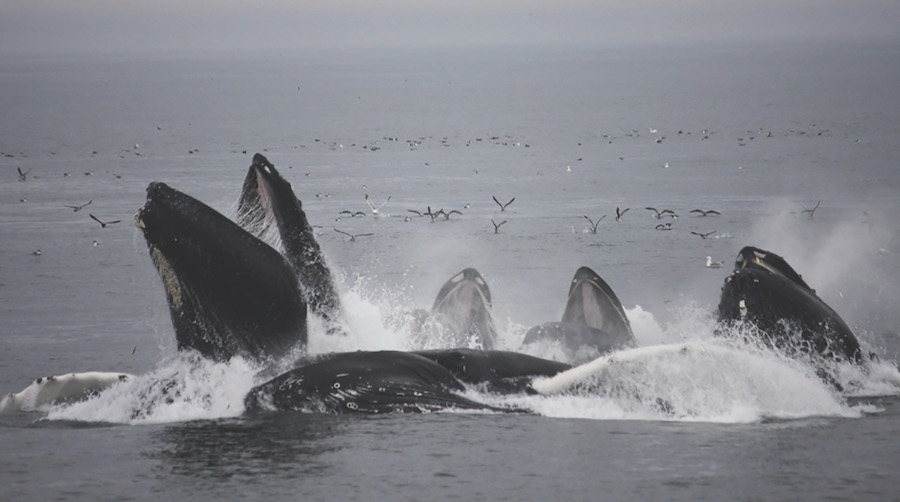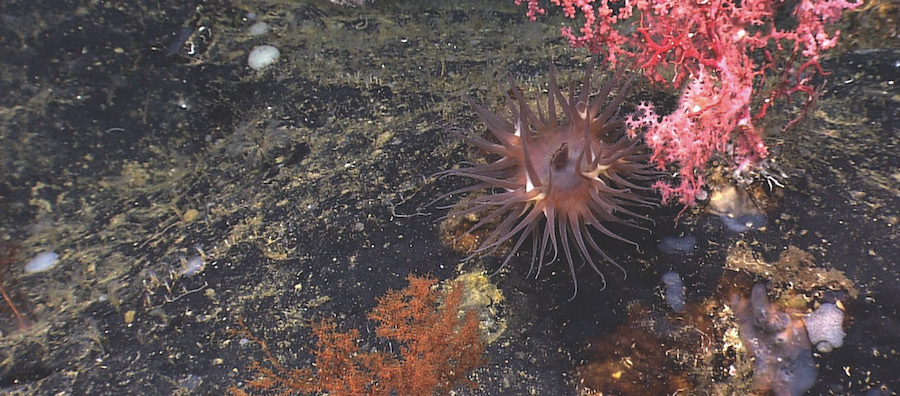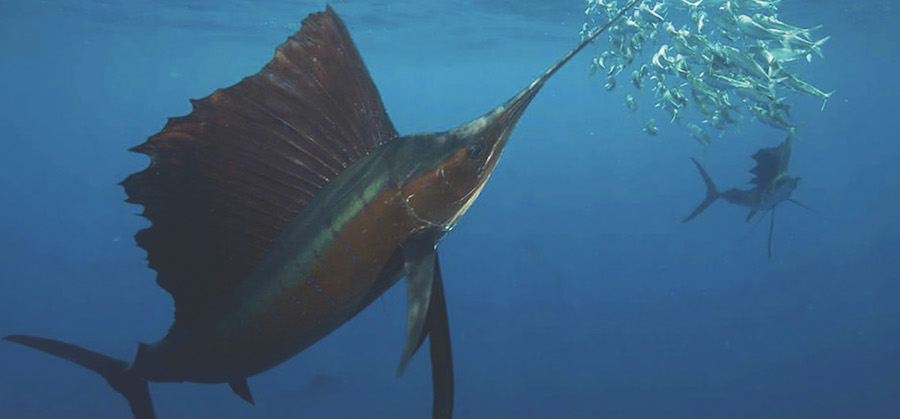President Trump announced on Friday, June 5 that he would allow commercial fishing in a conservation area 130 miles southeast of Cape Cod. Scientists and fisheries advocates here agree the move may be meant to have political appeal, especially for Maine fishermen, but does not reflect any real assessment of what would be good either for the environment or for fishermen.
The move is likely also to be illegal. “We’re going to take him to court and stop him,” said Peter Shelley, senior council at the Conservation Law Foundation, which worked for several years to establish the Northeast Canyons and Seamounts Marine National Monument.
Shelley explained that the Obama administration created the monument under the Antiquities Act of 1906, which allows presidents to protect land and marine regions from adverse human impacts. Although Congress gives the executive branch the power to create these monuments, Shelley said Trump’s move is “illegal,” arguing presidents do not have the unilateral power to diminish the size of or disestablish national monuments.
“In our view, the law is clear,” he said. “Congress gave him the power to create, but any elimination of a monument or reduction in its scope needs to go to Congress.” He said this question is currently being decided in the Bears Ears National Monument in Utah, which Trump reduced in size in 2017.

But Is It Good for the Fishermen?
Trump signed the decree with lobster traps and buoys set up in front of his desk. But his move doesn’t do much economically for fishermen.
Before the monument was created, very few fishermen actually used the area beyond Georges Bank to fish. They were allowed to continue to do so under a grandfather clause, permitting phased out access over several years.
Cape Cod Fisheries Trust director Seth Rolbein told the Independent that the monument “doesn’t impact our fishing community at all, and never really has. It’s not something that’s high on our radar.” He believes only a handful of boats out of southern Maine use the region for lobstering.
And it turns out opening up even more areas to lobstering — especially distant regions offshore — makes little sense from a scientific perspective. A new study from Woods Hole Oceanographic Institution found that the lobster industry would actually benefit from a shorter season with less gear. With longer seasonal closures, lobster stocks rebound, and catch increases.
Shelley pointed out that Trump’s trade wars with China and the E.U. have wreaked much more damage to the lobster industry, on which the Independent reported on Nov. 11.
A Special Ecosystem

The monument spans just under 5,000 square miles (about the size of Connecticut) and contains three underwater canyons, deeper than the Grand Canyon, and four seamounts, the tallest of which rises 8,202 feet from the sea floor. It is the only national marine monument in the Atlantic Ocean.
According to the National Oceanic and Atmospheric Administration (NOAA) website, its steep walls cause ocean currents to spiral upwards from below, allowing nutrient-rich deep water to rise into zones where sunlight penetrates. This process allows 54 species of deep-sea corals to grow at depths of 3,900 meters below the surface. Sponges and anemones also provide shelter to baby fish and a wide variety of life deep in the ocean.
Scientists still have a lot to learn about the monument’s ecosystems, which is why Stormy Mayo, a scientist at the Provincetown Center for Coastal Studies, said that the area needs protecting. “We don’t know what we need to know about the canyons area from a scientific point of view,” he said. “It’s clearly a very special ecosystem. The biggest issue is our lack of knowledge.”
He pointed out that humans have often caused extensive environmental damage simply because we don’t see the effects of our actions until it is too late.
As far as what human actions might now be taken there, the area does not have any known deposits of oil or gas. Fishing could cause damage to the fragile ecosystems, especially with traps that crush coral. But the monument’s deep waters are likely best for pot and lobster fishing, according to Mayo.

The problem, Mayo said, is that the type of deep-water gear that would be used there is typically very heavy and therefore animals that become tangled in it have “very little chance” of surviving. Unlike in Cape Cod Bay, where whale entanglements are easier to spot, the monument’s remote location makes it difficult for scientists to keep track of animals in crisis.
Although the U.S. Fish and Wildlife Service website describing the monument area includes pictures of whales feeding there, Mayo said the area has not been extensively monitored for whales. “With a lot of the issues of management and conservation, the rule ‘out of sight, out of mind’ applies,” he said. “If we don’t see them because we’re not there, we think it’s not a problem.”
When the Independent asked to speak with a scientist at the NOAA Greater Atlantic Regional Fisheries Office, which manages the monument, a press officer replied that “we’ve been instructed to send all press inquiries to the White House.”
The White House did not respond to requests for comment.
Getting Away With It
Shelley, of the Conservation Law Foundation, said the setup was a “photo op for the president.”
The monument was created by President Obama in 2016. The way Shelley sees it, the current president’s reversal is “just another opportunity for him to rant against President Obama’s legacy — his highest priority is reversing whatever the last president did.”
But Trump’s move still has national implications. “If he can get away with it here,” Shelley said, “he can get away with it anywhere.”



